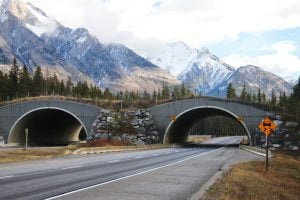Many of us grew up watching Kanga and Roo hop around while Winnie the Pooh lumbered along as best he could. But new research suggests that kangaroos actually move more like Tigger bouncing on his tail.
Researchers from Simon Fraser University in British Columbia have discovered that kangaroos use their tails as a fifth leg. In fact, when on all fours (or maybe it should be fives), the tail does the heavy lifting. The tail not only helps to balance and support the kangaroo, but “it’s also a very strong motor,” says Max Donelan, an associate professor at Simon Fraser University.
“It provides most of the propulsive forces that push it forward. Basically, it’s a tail in name only. The function it plays for them during slow walking is indistinguishable from a leg.”
The discovery was made by an ingeniously simple method: build a box with a base of force plates that is low enough that it forces kangaroos into their natural walking position. Then synchronize the data from the force plates, which measure how much pressure is being exerted, with the video to see which limb, or in this case tail, is working at a given time.
Donelan’s research typically focuses on human leg locomotion—how people move and how much energy is consumed while moving. Research models show that for humans, walking or running efficiency is tied to when we push off with our back leg. “If they pushed off with the correct timing, they could reduce the energetic cost of walking by about four-fold,” Donelan says. “It turns out that healthy humans do that nearly perfectly.”
But people that have suffered trauma, such as a stroke, amputation or surgery, don’t. Donelan says this leads to wasted energy that can limit how far or fast they can walk, and may impact what kind of career they can have.
So why kangaroos?
Donelan says the same type of model that showed how efficient humans can be when walking suggested that kangaroos wouldn’t be able to time their movements well when moving slowly, which would result in a lot of wasted energy. But it turns out their tail touches the ground at the right time to ensure maximum efficiency.
“So the question is, can they actually use their tail, which evolved to hang from trees, to actually be a functional leg?” Donelan asks. The answer is yes.
He says that that though there isn’t a direct human application for the research, it’s important to do this type of research because it can lead to surprising outcomes. “It’s forced me to think about what a leg really is.”




